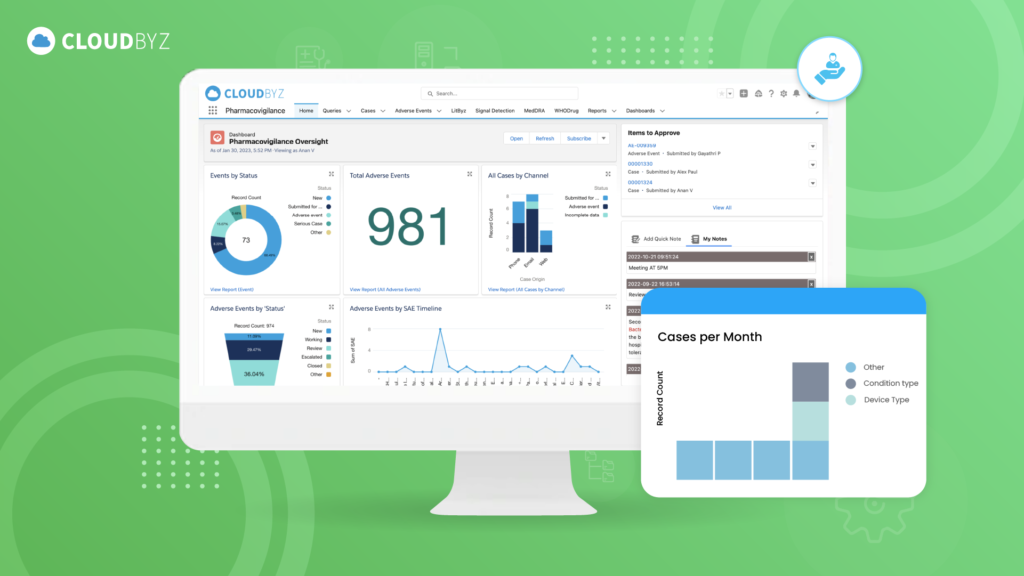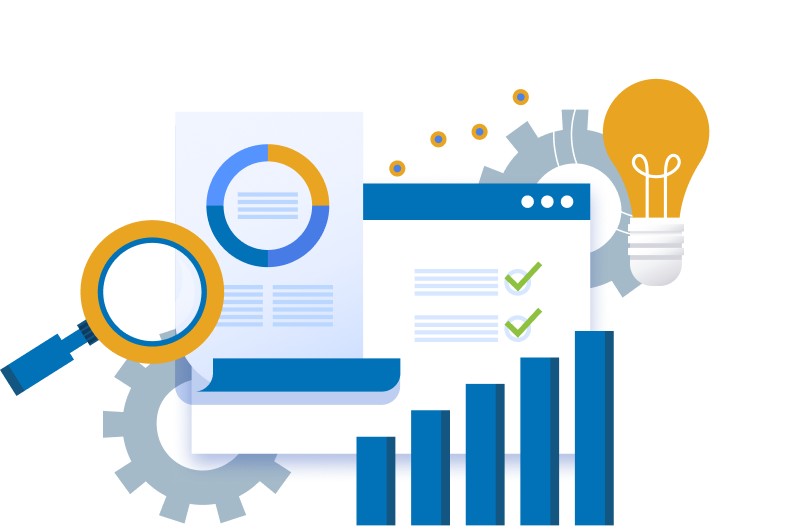
In the ever-evolving landscape of the life sciences industry, ensuring drug safety is paramount. With increasing regulatory demands, the complexity of global markets, and the surge in data volume from various sources, selecting the right drug safety solution has become a critical decision for organizations. The right solution can streamline operations, ensure compliance, and ultimately safeguard patient well-being. This guide offers a comprehensive approach to choosing the best drug safety solution for your organization, focusing on key factors such as scalability, compliance, and ease of use.
Understanding the Importance of Drug Safety Solutions
Drug safety solutions, often referred to as pharmacovigilance systems, are designed to collect, monitor, assess, and evaluate information from healthcare providers and patients on the adverse effects of medications. Implementing an effective drug safety solution helps organizations:
- Ensure Patient Safety: By identifying and preventing adverse drug reactions.
- Maintain Regulatory Compliance: By adhering to global and local regulatory requirements.
- Improve Operational Efficiency: By automating and streamlining pharmacovigilance processes.
- Facilitate Informed Decision-Making: By providing actionable insights through data analytics.
Assessing Your Organization’s Needs
Before diving into the selection process, it’s crucial to have a clear understanding of your organization’s specific needs and challenges.
- Identify Current Challenges: Are you facing issues with data silos, manual processes, or compliance risks?
- Define Objectives: What are the primary goals you wish to achieve with a new drug safety solution? Is it to improve efficiency, enhance compliance, or integrate with other systems?
- Evaluate Resources: Consider the budget, available technology infrastructure, and the expertise of your team.
Key Factors to Consider When Selecting a Drug Safety Solution
1. Scalability
As your organization grows, your drug safety solution should be able to scale accordingly.
- Handling Increased Data Volume: The system should manage growing amounts of safety data without compromising performance.
- Supporting Multiple Products and Markets: It should accommodate new products and entry into new geographic markets.
- Cloud-Based vs. On-Premises: Cloud-based solutions often offer better scalability and lower upfront costs compared to traditional on-premises systems.
Questions to Ask:
- Can the solution handle an increase in case volume without degradation?
- Does it support global operations and multiple regulatory requirements?
2. Regulatory Compliance
Compliance with global pharmacovigilance regulations is non-negotiable.
- Regulatory Standards Support: Ensure the solution complies with standards like FDA’s FAERS, EMA’s EudraVigilance, and ICH guidelines.
- Automated Reporting: The ability to generate and submit expedited and periodic safety reports automatically.
- Audit Trails and Documentation: Comprehensive tracking of all activities for regulatory inspections.
Questions to Ask:
- How does the solution stay updated with changing regulations?
- Does it support electronic reporting to all relevant regulatory authorities?
3. Ease of Use
A user-friendly interface enhances productivity and reduces the learning curve.
- Intuitive User Interface: The system should be easy to navigate for all users, including those who are not tech-savvy.
- Customization: Ability to tailor dashboards and reports to specific user roles and preferences.
- Training and Onboarding: Availability of comprehensive training resources and support during implementation.
Questions to Ask:
- Is the interface intuitive and user-friendly?
- What training and support are provided to help users get up to speed?
4. Integration Capabilities
Seamless integration with other systems is essential for efficient operations.
- Interoperability: The solution should integrate with electronic health records (EHRs), clinical data management systems, and other relevant platforms.
- Data Exchange Standards: Support for data standards like HL7, XML, and other relevant formats.
- APIs and Custom Integrations: Availability of APIs for custom integrations with in-house systems.
Questions to Ask:
- Can the solution integrate with our existing systems?
- Does it support standard data exchange protocols?
5. Security
Protecting sensitive patient and company data is crucial.
- Data Encryption: Both at rest and in transit.
- Access Controls: Role-based permissions to ensure only authorized personnel can access specific data.
- Compliance with Data Protection Regulations: Such as GDPR, HIPAA, and other relevant laws.
Questions to Ask:
- What security measures are in place to protect data?
- How does the solution comply with data protection regulations?
6. Cost-Effectiveness
While cost should not be the sole deciding factor, it’s important to ensure the solution offers value for money.
- Transparent Pricing: Understand all costs involved, including licensing, implementation, training, and ongoing support.
- Return on Investment (ROI): Consider long-term benefits like increased efficiency and reduced compliance risks.
- Flexible Pricing Models: Options like subscription-based pricing can be more manageable for some organizations.
Questions to Ask:
- What is the total cost of ownership?
- Are there any hidden fees or additional costs for upgrades and support?
7. Customer Support and Training
Reliable support ensures that any issues are promptly addressed.
- 24/7 Support: Availability of support services whenever needed.
- Dedicated Account Management: Personalized assistance and a direct point of contact.
- Training Programs: Ongoing training opportunities to keep your team updated on new features and best practices.
Questions to Ask:
- What levels of support are offered?
- Are training and resources provided for new users and updates?
8. Innovation and Future-Proofing
Choose a solution that embraces technological advancements.
- Artificial Intelligence and Automation: Features like AI-driven signal detection and automated case processing can significantly enhance efficiency.
- Regular Updates and Upgrades: The provider should continuously improve the solution to keep up with industry trends.
- User Community and Feedback: An active user community can influence the development of new features.
Questions to Ask:
- How does the solution leverage new technologies?
- Is there a roadmap for future developments?
Steps to Evaluate Potential Solutions
1. Research and Shortlist Providers
- Market Analysis: Look for providers with a strong reputation in the industry.
- Peer Recommendations: Consult with industry peers and professional networks.
2. Request Demos and Trials
- Live Demonstrations: See the solution in action to assess functionality and usability.
- Trial Periods: Test the solution with your data to evaluate performance.
3. Check References and Testimonials
- Client References: Speak to existing clients to understand their experiences.
- Case Studies: Review success stories and how the solution addressed specific challenges.
4. Assess Vendor’s Expertise and Stability
- Industry Experience: A provider with a deep understanding of pharmacovigilance is crucial.
- Financial Stability: Ensure the vendor is financially stable and will be a long-term partner.
- Cultural Fit: The vendor’s values and working style should align with your organization.
Conclusion
Selecting the right drug safety solution is a strategic decision that requires careful consideration of various factors. By focusing on scalability, compliance, ease of use, integration capabilities, security, cost-effectiveness, customer support, and innovation, organizations can identify a solution that not only meets their current needs but also adapts to future challenges.
Remember, the ideal drug safety solution should empower your organization to enhance patient safety, maintain regulatory compliance, and improve operational efficiency. Take the time to thoroughly evaluate potential solutions, involve key stakeholders in the decision-making process, and choose a partner that aligns with your organization’s vision and goals.
Next Steps
- Create a Detailed Requirement List: Document all your needs and expectations.
- Engage Stakeholders: Involve team members from different departments for a holistic view.
- Plan for Implementation: Develop a roadmap for deployment, including timelines and resource allocation.
- Monitor and Evaluate: After implementation, continuously assess the solution’s performance and make adjustments as needed.
By following this guide, your organization will be well-equipped to select a drug safety solution that delivers value and supports your mission to provide safe and effective therapies to patients worldwide.


